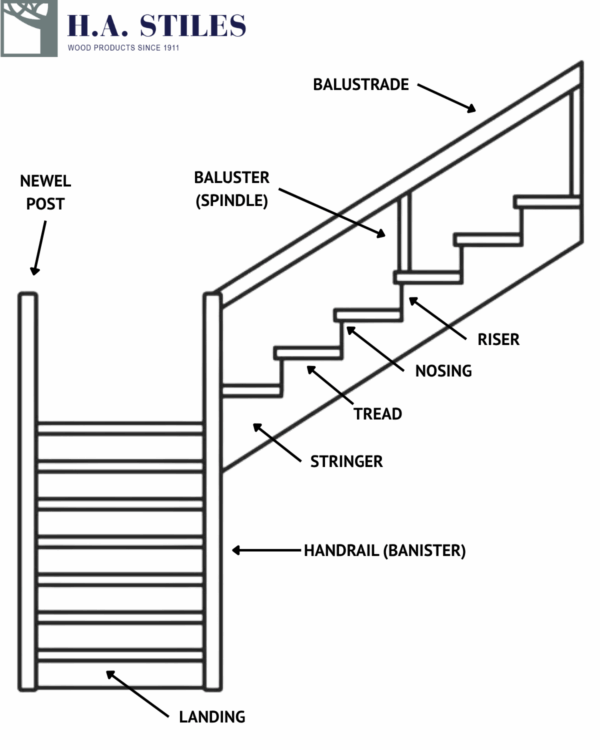Parts of a Staircase: A Complete Guide
Planning a renovation? Building something new? If so, understanding the parts of a staircase can make decisions easier and conversations with contractors much smoother. A staircase is often a major design feature in your home. Our guide breaks down each component clearly so you know exactly what’s what.
Who This Guide Is For
By understanding these basic stair terms, you’ll avoid confusion, spot potential issues, and maximize the style and safety needs of your project.
Key Stair Components (Explained Simply)

Additional Stair Components Worth Knowing
If you want to go even deeper, here are a few more parts not shown on the diagram but common in stair design:
Why Knowing These Parts Matters
When you understand the basic anatomy of a staircase, you’re better equipped to communicate clearly with builders, designers, or product suppliers, choose the right stair components for your project, budget accurately, and much more.
Looking for more information on the anatomy of a staircase? We also wrote a guide that breaks down the difference between balusters, banisters, and balustrades.
Need Custom Stair Parts?
H.A. Stiles manufactures high-quality stair components, from individual spindles to turned posts and more. Whether you’re replacing a single piece or building from scratch, we can create wood pieces to your exact specifications and ship nationwide.
Request a quote or ask a question today and let’s get your staircase project moving in the right direction!
Absolutely. At H.A. Stiles, we create custom wood stair components tailored to your project’s size, style, and material preferences. Restoring historic stairs? Designing something modern? We can build your dream pieces to spec.
Hardwoods like oak, maple, and poplar are popular for various stair parts. For balusters, wood or metal are both common. Your choice depends on the look you’re going for and whether the stairs are indoor or outdoor.
Local building codes vary, but common guidelines include a maximum riser height, consistent tread depth, and baluster spacing at or under 4 inches. Check your local code or consult a contractor to make sure your staircase is safe and compliant.
In most cases, yes. Components like balusters, treads, handrails, or even newel posts can be replaced individually. This is especially efficient when working with a custom manufacturer like H.A. Stiles.
Newel posts anchor the handrail and balustrade system. They’re typically placed at the base, top, or turns of the staircase and can be both functional and decorative.
Yes. “Banister” is another name for a handrail, especially in residential settings. It refers to the part of the railing you hold while walking up or down the stairs.
A balustrade is the complete railing system on a staircase. It includes the handrail, balusters (or spindles), newel posts, and sometimes a base rail. Its main functions are to prevent falls and add style.
